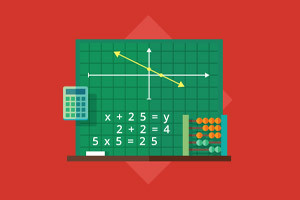Having difficulty applying probability theory to predict possible outcomes and learning the principles of statistics? Then this high-school algebra course is for you! Here, the definition of sample space, as well as tree diagrams and fundamental principles of counting, will be discussed in practical terms. Learn about Venn diagrams as an additional means of visualizing probability ideas. You will be taught the probability of simple and compound events, and master about the definition of and formula used to calculate empirical probabilities. Study the types and functions of probabilities in addition to the formula for calculating theoretical probability. This course also covers the evaluation and sum of probabilities, and complementary events. Learn about simple probabilities, certainties, and impossibilities, and delve into the probability of mutually exclusive or inclusive events.
Furthermore, this course analyzes the principle of counting and probability principles. You will learn how to solve the probability of independent and dependent events. A brief history and application of Bernoulli's experiments in addition to the conditions they must satisfy will be explained. Study the probability of exactly 'x' successes in 'n' trials and the probability that at least (or at most) a certain number of successes will occur. Learn about the brief history and application of statistics. Study the requirements for sampling, ways of gathering data and its various classifications. The measures and different types of central tendency in understanding the importance of an entire set of a given data is broken down. Taking this course gives you insight into the application of the ‘mean’, ‘median’ and ‘mode’. You will learn the various ways of representing, displaying and graphing data. Learn about pictorial graph representation and the steps used to determine the size of each sector of a pie graph.
Lastly, the definition of and method for constructing a cumulative frequency histogram from given data will be covered. Topics such as understanding percentiles, quartiles, and median will be analyzed extensively. You will learn about the method for determining the median for individual observations and how to find quartiles on a graph. Study the various methods and advantages of data dispersion along with mean absolute deviation, range, variance and square deviation. Learn about normal bell-shaped distribution and the guidelines the normal curve is constructed by. This course will greatly benefit those who want to improve their high school mathematics results or their understanding of basic stats and probabilities.
What You Will Learn In This Free Course
View All Learning Outcomes View Less All Alison courses are free to enrol study and complete. To successfully complete this course and become an Alison Graduate, you need to achieve 80% or higher in each course assessment. Once you have completed this course, you have the option to acquire an official , which is a great way to share your achievement with the world.
Your Alison is:
- Ideal for sharing with potential employers
- Great for your CV, professional social media profiles and job applications.
- An indication of your commitment to continuously learn, upskill & achieve high results.
- An incentive for you to continue empowering yourself through lifelong learning.
Alison offers 3 types of s for completed courses:
- Digital : a downloadable in PDF format immediately available to you when you complete your purchase.
- : a physical version of your officially branded and security-marked
All s are available to purchase through the Alison Shop. For more information on purchasing Alison , please visit our FAQs. If you decide not to purchase your Alison , you can still demonstrate your achievement by sharing your Learner Record or Learner Achievement Verification, both of which are accessible from your Account Settings.














 Avg Hours
Avg Hours CPD Accredited
CPD Accredited
 Total XP:
Total XP: 
 Knowledge & Skills You Will Learn
Knowledge & Skills You Will Learn







